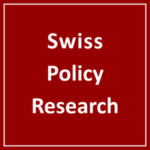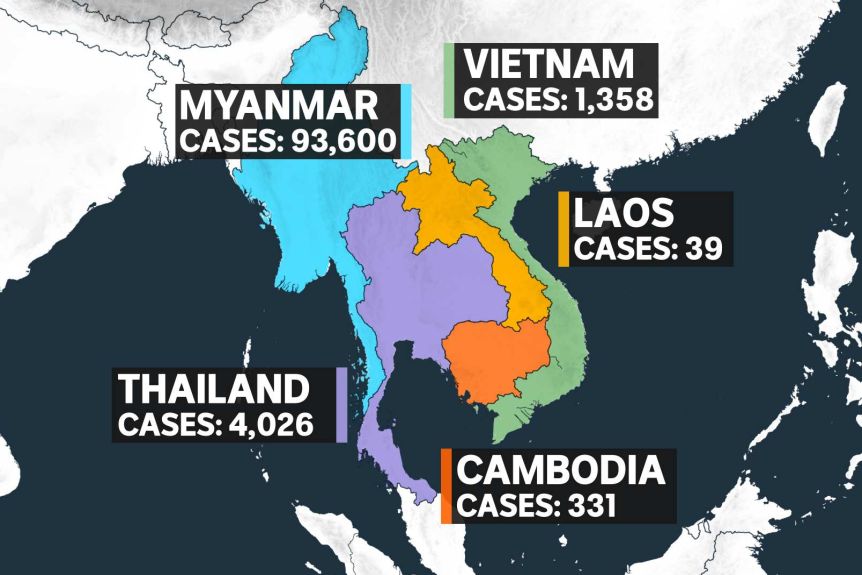The Zero Covid Countries
COVID19 - CORONAVIRUS, 14 Dec 2020
Swiss Policy Research - TRANSCEND Media Service
How did some countries manage to achieve a very low covid-19 prevalence?
7 Dec 2020 – Non-African countries with at least one million inhabitants but less than 1000 covid cases per one million inhabitants include, notably: Laos, Vietnam, Cambodia, Taiwan, Thailand, China (ex. Wuhan), New Zealand, South Korea, Cuba, Hong Kong, Australia (ex. Victoria) and Singapore (ex. migrant workers). Other major countries with a low covid prevalence include Japan, Finland and Norway.
The typical ‘reactive’ measures cannot explain this: it cannot be masks, as most of the worst affected countries have introduced mandatory masks, too; it also cannot be national lockdowns, as most of the worst affected countries have had lockdowns, too; and it cannot be mass PCR testing, as many of the worst affected countries have rather high testing rates, too.
Instead, the single most important factor has been early border control (as of January or February), something all of the above countries did. This is easiest for islands, which several of the above countries indeed are. The second group of rapidly responding countries consists of countries directly bordering China, most of which have had experience with the 2003 SARS–1 epidemic.
(Overall, most major islands did well: besides Taiwan, New Zealand, Cuba and Australia, this also includes Iceland, Greenland, Sri Lanka, Madagaskar, Mauritius and Haiti.)
Even with early border control, however, a few infected people may already have entered the country. These people need to be identified and isolated very quickly. This can be done in a high-tech way (by rapid PCR testing, as in China, Taiwan, South Korea) or in a low-tech way (by batch isolation, as in Vietnam and Thailand. Vietnam isolated up to 200,000 people).
Moreover, potentially infected people should be isolated not at home – where they may infect their family and neighbors –, but in dedicated isolation facilities, something most of the above countries indeed did. This is easiest for authoritarian countries (such as China, Vietnam and Thailand), but democratic low-covid countries like Australia, New Zealand and South Korea did this, too.
(Within Australia, only the state of Victoria and its capital city Melbourne failed to properly isolate infected people and, as a result of this, entered into a nightmarish months-long lockdown.)
Are there (non-African) low-covid countries without early and strict border control? No.
A few countries happened to avoid the spring wave, but got caught in the autumn wave. This group includes the Czech Republic (and most of Eastern Europe) as well as Uruguay in South America; some US states (notably in the Midwest) also belong to this group. Interestingly, in the US, the US President wanted to close borders early, but senior health experts were against it.
The hypothesis of a ‘pre-existing immunity’ due to similar coronaviruses, e.g. in Southeast Asia, doesn’t seem to hold: while Thailand, Laos and Vietnam have few covid cases, their direct neighbors Myanmar (Burma), Indonesia, Malaysia, Bangladesh and the Philippines have many cases.
In contrast to influenza epidemics, primary schools have not been a major driver of the coronavirus pandemic. Secondary and tertiary schools are a different and more complex matter, however.
In conclusion, if you don’t want trouble with the coronavirus, don’t let the coronavirus in. Just a few weeks of delay may make all the difference, as in the cases of France vs. Germany or Norway vs. Sweden. In contrast, once the coronavirus is already widespread in a country, most of the much-discussed measures have turned out to be largely ineffective, and often destructive.
In the case of the highly infectious coronavirus, even the idea of “protecting the high-risk group” has turned out to be very difficult, if not impossible, in a high-prevalence environment. This is shown by the fact that in many Western countries, about 50% of deaths occurred in nursing homes.
In terms of economic impact, IMF data clearly shows that the harder and longer a lockdown, the stronger the economic contraction. However, most lockdowns occurred in response to an already high infection rate due to late border control. The economic impact moreover depends on the structure of an economy (e.g. the importance of the tourism and export industries).
Once the coronavirus has become widespread in a country, the single most effective measure to reduce severe illness and deaths appears to be large-scale early and prophylactic treatment.
The question of covid prevalence is different from the question of covid mortality. The latter depends mostly on demographics and possibly on genetic, immunological and lifestyle factors.
Many Western countries and Russia are high-prevalence and high-mortality. Many African countries and India are high-prevalence but low-mortality. Countries like Vietnam and Cambodia are low-prevalence and (likely) low-mortality. Countries like Japan and Taiwan are low-prevalence but (probably) high-mortality, although likely not as high as Western countries.
See also
__________________________________________
 Swiss Policy Research, founded in 2016, is an independent, nonpartisan and nonprofit research group investigating geopolitical propaganda in Swiss and international media. SPR is composed of independent academics that for personal and professional reasons prefer to protect their identities, and receives no external funding; there are no financial sponsors or backers. Our articles have been published or shared by numerous independent media outlets and journalists, among them Julian Assange, and have been translated into more than two dozen languages.
Swiss Policy Research, founded in 2016, is an independent, nonpartisan and nonprofit research group investigating geopolitical propaganda in Swiss and international media. SPR is composed of independent academics that for personal and professional reasons prefer to protect their identities, and receives no external funding; there are no financial sponsors or backers. Our articles have been published or shared by numerous independent media outlets and journalists, among them Julian Assange, and have been translated into more than two dozen languages.
Tags: COVID-19, Coronavirus, Public Health
DISCLAIMER: The statements, views and opinions expressed in pieces republished here are solely those of the authors and do not necessarily represent those of TMS. In accordance with title 17 U.S.C. section 107, this material is distributed without profit to those who have expressed a prior interest in receiving the included information for research and educational purposes. TMS has no affiliation whatsoever with the originator of this article nor is TMS endorsed or sponsored by the originator. “GO TO ORIGINAL” links are provided as a convenience to our readers and allow for verification of authenticity. However, as originating pages are often updated by their originating host sites, the versions posted may not match the versions our readers view when clicking the “GO TO ORIGINAL” links. This site contains copyrighted material the use of which has not always been specifically authorized by the copyright owner. We are making such material available in our efforts to advance understanding of environmental, political, human rights, economic, democracy, scientific, and social justice issues, etc. We believe this constitutes a ‘fair use’ of any such copyrighted material as provided for in section 107 of the US Copyright Law. In accordance with Title 17 U.S.C. Section 107, the material on this site is distributed without profit to those who have expressed a prior interest in receiving the included information for research and educational purposes. For more information go to: http://www.law.cornell.edu/uscode/17/107.shtml. If you wish to use copyrighted material from this site for purposes of your own that go beyond ‘fair use’, you must obtain permission from the copyright owner.
Read more
Click here to go to the current weekly digest or pick another article:
COVID19 - CORONAVIRUS:
